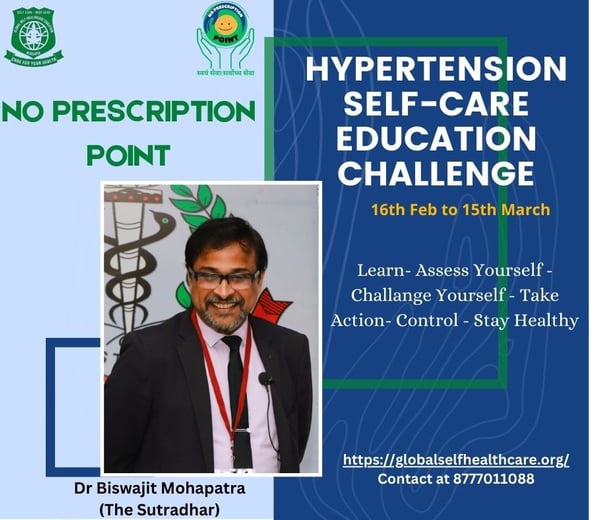Day-7: Understanding Diastolic Pressure and Low Pulse Pressure: Why It Matters in Hypertension Self-Care
On this 7th day, let’s address an important question raised by one of our attendees:
Dr Biswajit Mohapatra
2/23/20252 min read
In our Hypertension Self-Care Education Challenge, we have covered various aspects of blood pressure to date On this 7th day, let’s address an important question raised by one of our attendees:
Q-1: “What is the significance of diastolic pressure, and what does low pulse pressure mean for my heart health?”
These two concepts are crucial for understanding cardiovascular health, especially in the context of hypertension, heart function, and self-care strategies.
The Significance of Diastolic Pressure
When you measure your blood pressure, you get two numbers:
Systolic Pressure (Upper Number)—The force of blood against artery walls when the heart beats.
Diastolic Pressure (Lower Number)—The force of blood when the heart is at rest between beats.
Why is diastolic pressure important?
Indicator of Artery Health: If too high, it suggests stiff or narrow arteries, increasing heart disease risk.
Ensures Oxygen Supply: If too low (below 60 mmHg), the heart and brain may not receive enough oxygen.
Predictor of Hypertension-Related Complications: A consistently high diastolic reading (above 90 mmHg) raises the risk of stroke, kidney damage, and heart failure.
Takeaway: Monitoring diastolic pressure helps assess overall vascular health, guiding self-care and medical interventions.
Q-2: What is Low Pulse Pressure and Why Does It Matter?
Pulse pressure is the difference between systolic and diastolic pressure. Ideally, it should be between 40-60 mmHg.
If pulse pressure is too low (<40 mmHg), it may indicate:
🔹 Weak Heart Function—The heart isn’t pumping effectively (e.g., in heart failure).
🔹 Aortic Stenosis—A narrowed heart valve restricts blood flow.
🔹 Blood Loss or Dehydration—Reduced blood volume leads to lower pressure.
🔹 Pericardial Effusion—Fluid buildup around the heart reduces its ability to expand and contract.
Symptoms of Low Pulse Pressure:
Dizziness, fatigue, or fainting
Shortness of breath
Cold hands and feet due to poor circulation
Takeaway: A consistently low pulse pressure should be evaluated, especially if accompanied by symptoms.
Self-Care Tips to Maintain Healthy Blood Pressure Balance
Stay Hydrated—Dehydration can lower pulse pressure. Drink enough water daily.
Maintain a Balanced Diet—Include potassium-rich foods (bananas, spinach, avocados) to support healthy blood pressure.
Manage Stress—Practice meditation, yoga, or deep breathing to balance nervous system function.
Monitor Blood Pressure Regularly—Keep track of both systolic and diastolic values to detect changes early.
Exercise Mindfully—Light to moderate physical activity helps strengthen the heart without excessive strain.
Limit processed foods & salt—High sodium can increase diastolic pressure and worsen hypertension.
Consult a doctor if needed—if you notice consistently low pulse pressure or extreme variations, seek medical advice.
Final Thoughts
Understanding diastolic and pulse pressure empowers you to take proactive steps to manage your heart health. Hypertension self-care is not just about lowering numbers; it’s about maintaining balance, awareness, and daily healthy habits.
Your health is in your hands. Keep learning, stay mindful, and take small steps toward a healthier heart!
Do you have more questions about hypertension or self-care? Share your thoughts in the comments, and let’s continue learning together!
Dr Biswajit Mohapatra,
Team GSHER

Previous Day Challenges
Click the Link to Join the Hypertensive Self Care Education Challenge From Day 1 to 6


